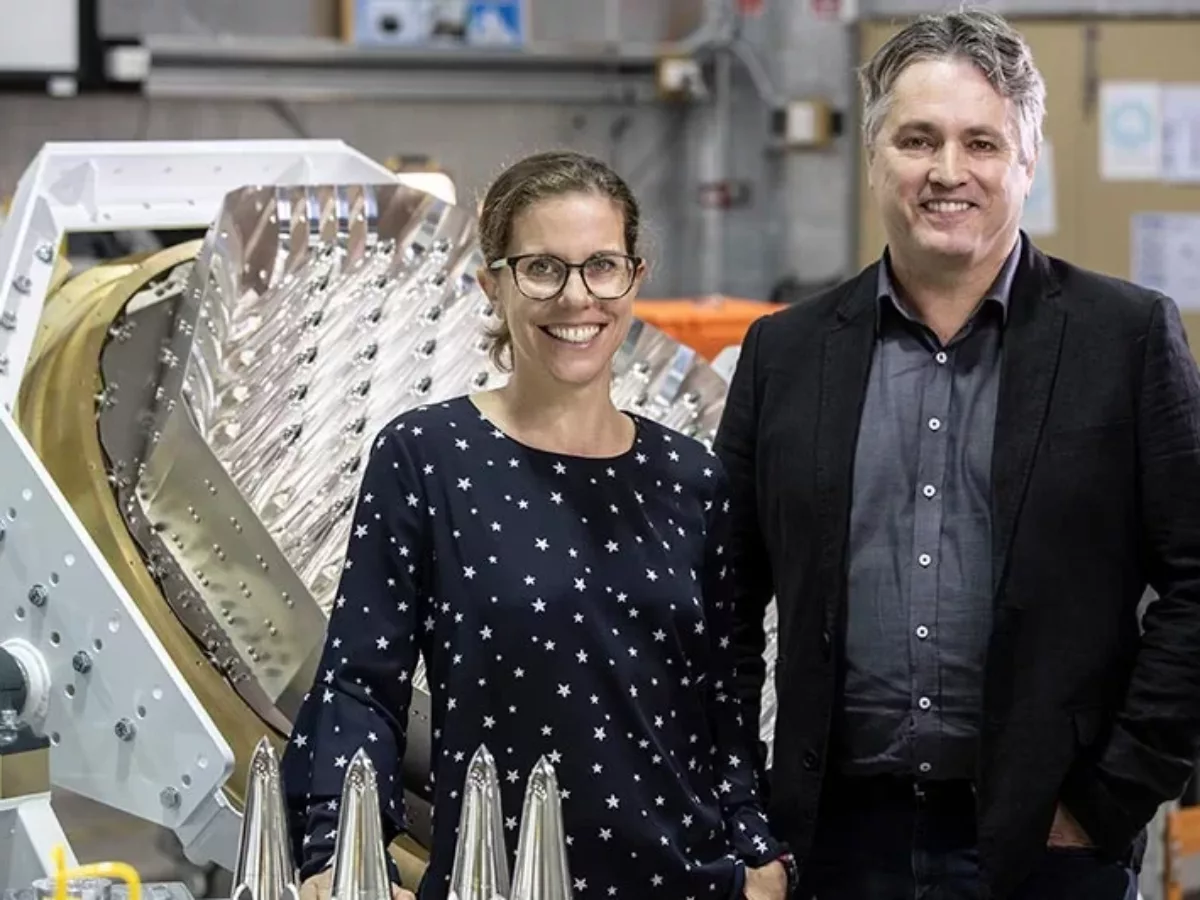CSIRO spin-out Quasar is building world-leading satellite tech

By Rachel Bolton
One of the great joys of scientific innovation is looking at an existing technology and envisioning a completely novel application outside its original purpose. Quasar Satellite Technologies is a rather elegant example of just that.
The new Australian startup is reimagining the application of phased array feeds, originally designed for astronomy and space observation, to produce a satellite ground station facility capable of monitoring and communicating with hundreds of satellites simultaneously – a huge leap forward in the world of space-derived data.
Founding director and commercialisation specialist, Dr Ilana Feain, explains that conventional satellite monitoring is a one-to-one communication system: one dish transmits to one satellite and that satellite transmits back to that dish.
“That’s OK when you have either a small number of satellites moving around the earth or your satellites are in geostationary orbit,” she says. “That means that relative to the earth they don’t really move.”
This has been the standard throughout the 60-year history of satellite technology. All the while, there has been slow but steady growth in the number of satellites launched into orbit at a rate of somewhere between 60 and 100 each year until 2010. But the massive rise in demand for data of all sorts that has come to dominate our modern lives has also led to an explosion in the number and variety of satellites traversing our skies.
Already in 2021, about 1,400 satellites have been launched. Elon Musk’s Space X program alone has propelled more than 1,700 into space in the last five years. It is predicted that over the next decade there will be tens of thousands of satellites launched into low and medium earth orbit, serving an appetite for all kinds of data and communication services.
Moreover, these satellites differ from their predecessors in some significant ways. Crucially for the Quasar project, they orbit a lot closer to the earth, which means they travel a lot faster – a major problem for legacy dish technology.
“Each one of these satellites needs to communicate with the ground,” says Dr Feain. “And they also have to relay information back. We would either have to build farms of very fast-moving dishes or think of a completely different way of communicating with satellites.” And this is what Quasar has done.
The phased array is a set of antennas arranged in flat panel that digitally synthesises the communication beam and can be focused anywhere on the sky, as required. “Because the communication link between the ground plane and the satellite is a digital synthesis, you can move them very quickly,” Dr Feain explains. “And you can also generate as many beams as you require, so it’s scalable. It’s the equivalent of going from a single pixel camera where you have to do a raster scan of pixels to create a photo, to taking a multi-pixel photograph.”
There is already a strong demand for space-derived data from a wide range of industries and sectors, both professional and institutional, ranging from organisations relying on earth observation and imaging, to communications and, of course, national defence. Space-derived data is used in disaster management, agriculture, renewable energy, oil and gas, forestry, space junk monitoring, traffic management, supply chain and logistics, financial services – it’s a growth market. Accommodating that growth is also central to the Quasar business model, which has been designed to provide ground station monitoring as a service.
“Space is big business because of the downstream data industry that it enables,” says Dr Feain. “The bottleneck getting all that data down to the ground is the problem, and that bottleneck is Quasar’s opportunity.”
Quasar is the result of research and development by the CSIRO, commercialised in partnership with venture capital firm Main Sequence and industry partners Vocus, Saber Astronautics, Fleet Space Technologies and Clearbox Systems. It is 100 per cent Australian owned and operated.
Quasar is a finalist in the Microsoft sponsored 2021 InnovationAus Space and Remote Automation award, alongside Gilmour Space Technologies and Hypersonix Launch Systems. All three companies are also finalists in the People’s Choice Award.
The InnovationAus 2021 Awards for Excellence will be presented at a gala black-tie dinner held on Wednesday, December 1, at the Overseas Passenger Terminal in Sydney. You can book your tickets at the Awards website. For further enquiries, please email [email protected]
This article originally appeared at InnovationAus.
Subscribe to our free @AuManufacturing newsletter here.
Topics Technology
@aumanufacturing Sections
Analysis and Commentary Awards Defence Manufacturing News Podcast Technology Videos










